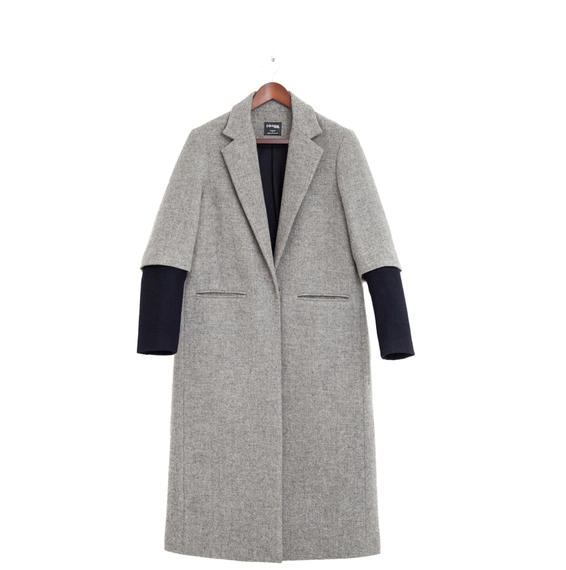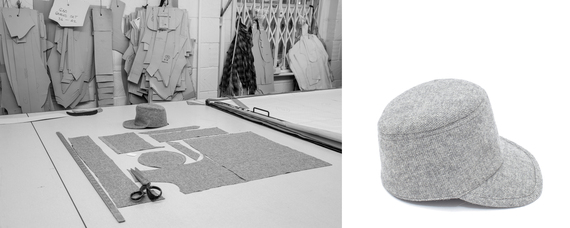When I read that this year's Bright New Things at Selfridges were going to be some of the earliest pioneers of responsible fashion, I couldn't wait to take a look. Buried deep in the heart of the esteemed labyrinth, they were scattered, their innovation tightly controlled in neatly compact displays.
'The days of lumbering corporate giants with their own rule books are gone. It will be the small, the nimble, the innovative and the socially positive who win, because customers want them to' Sarah Greenaway, founder of Mosami, recently said.
How I wish I could agree, but I sense that in reality there's a long way to go.
I read near the clothing rail of one Bright New Thing, designer Katie Jones, that these chosen brands prove that Sustainable Fashion doesn't have to be boring. Agreed. But in the age of the Internet and social media, must we rely on a world-renowned department store to get this message across?
If my experience in this industry has taught me anything so far, it's that you have no idea what you might discover round any corner (coveted or otherwise) and just a stone's throw away from this shoppers' goliath lies one of the most exciting brands I have encountered to date.
Introducing (re)vision society.
I had come across (re)vision society late last year and ever since, had been desperate to meet the girl behind the clothing. And finally, this cool January brought the day.
There surely is nothing better than meeting a designer fully decked out in their own creations. Bag, check. Hat, check. Coat, check. It's like making the subject of the meeting 3D; the brand values; its style; its communication, all wrapped up and presented in a living, breathing human being. It's a rare and remarkable experience.
Trying to summarise the 'interesting points' of such a harmonious vision seems a little feeble. As the founder herself writes 'there is so much more going on behind the seams'.
I will however try...
Every part of every product is sourced from waste materials found in London's menswear factories.
That means the beautifully masculine outer fabric
and the lining
and any handles
and the hand stamped labels
and the bits beyond the lining and labels that you may have not, like me, even known existed (interfacing, wadding, canvas etc).
The differing sizes and shapes of these materials are no cause for concern for the makers. If need be they are patchworked together or layered on top of each other to achieve the desired outcome.
And, as if there needed to be anything else, one of their products 'The Thinking Cap' was designed by an intern with the assistance of the team - the most valuable kind of collaboration, surely.
And a very last but very important detail: each product boasts a unique offcut rescue number that emphasises just how individual it really is.
I hear you, you're thinking 'okaaay but what do these products actually look like?'
Just take a little look below:
![2016-02-01-1454326608-3316353-versatilecoat.jpg]()
The Versatile Coat, image courtesy of revisionsociety.com
![2016-02-01-1454326678-2941584-thinkingcap.jpg]()
The Thinking Cap, image courtesy of revisionsociety.com
![2016-02-01-1454327080-1067996-hybridbag.jpg]()
The Hybrid Rucksack, image courtesy of revisionsociety.com
So what else did this encounter produce aside from sincere admiration on my part? Some frankness. We spoke of the hardships that come with working alone, of playing all the roles required in a company, of the emotional and financial strains we've exposed ourselves to; and all in the name of building a more responsible fashion industry which, sadly, has a less than notable following right now.
I left our discussion however, with a total refuelling of energy to continue chasing this goal and full of appreciation for others doing the same...
This post was originally featured on the study 34 blog
'The days of lumbering corporate giants with their own rule books are gone. It will be the small, the nimble, the innovative and the socially positive who win, because customers want them to' Sarah Greenaway, founder of Mosami, recently said.
How I wish I could agree, but I sense that in reality there's a long way to go.
I read near the clothing rail of one Bright New Thing, designer Katie Jones, that these chosen brands prove that Sustainable Fashion doesn't have to be boring. Agreed. But in the age of the Internet and social media, must we rely on a world-renowned department store to get this message across?
If my experience in this industry has taught me anything so far, it's that you have no idea what you might discover round any corner (coveted or otherwise) and just a stone's throw away from this shoppers' goliath lies one of the most exciting brands I have encountered to date.
Introducing (re)vision society.
I had come across (re)vision society late last year and ever since, had been desperate to meet the girl behind the clothing. And finally, this cool January brought the day.
There surely is nothing better than meeting a designer fully decked out in their own creations. Bag, check. Hat, check. Coat, check. It's like making the subject of the meeting 3D; the brand values; its style; its communication, all wrapped up and presented in a living, breathing human being. It's a rare and remarkable experience.
Trying to summarise the 'interesting points' of such a harmonious vision seems a little feeble. As the founder herself writes 'there is so much more going on behind the seams'.
I will however try...
Every part of every product is sourced from waste materials found in London's menswear factories.
That means the beautifully masculine outer fabric
and the lining
and any handles
and the hand stamped labels
and the bits beyond the lining and labels that you may have not, like me, even known existed (interfacing, wadding, canvas etc).
The differing sizes and shapes of these materials are no cause for concern for the makers. If need be they are patchworked together or layered on top of each other to achieve the desired outcome.
And, as if there needed to be anything else, one of their products 'The Thinking Cap' was designed by an intern with the assistance of the team - the most valuable kind of collaboration, surely.
And a very last but very important detail: each product boasts a unique offcut rescue number that emphasises just how individual it really is.
I hear you, you're thinking 'okaaay but what do these products actually look like?'
Just take a little look below:



So what else did this encounter produce aside from sincere admiration on my part? Some frankness. We spoke of the hardships that come with working alone, of playing all the roles required in a company, of the emotional and financial strains we've exposed ourselves to; and all in the name of building a more responsible fashion industry which, sadly, has a less than notable following right now.
I left our discussion however, with a total refuelling of energy to continue chasing this goal and full of appreciation for others doing the same...
This post was originally featured on the study 34 blog